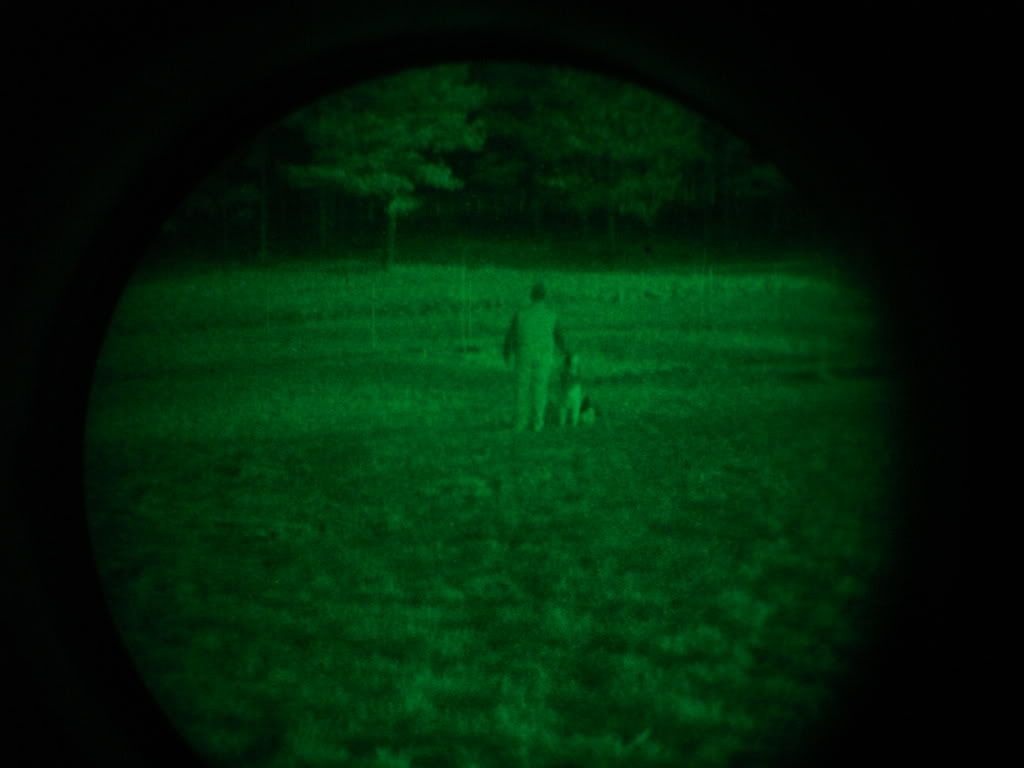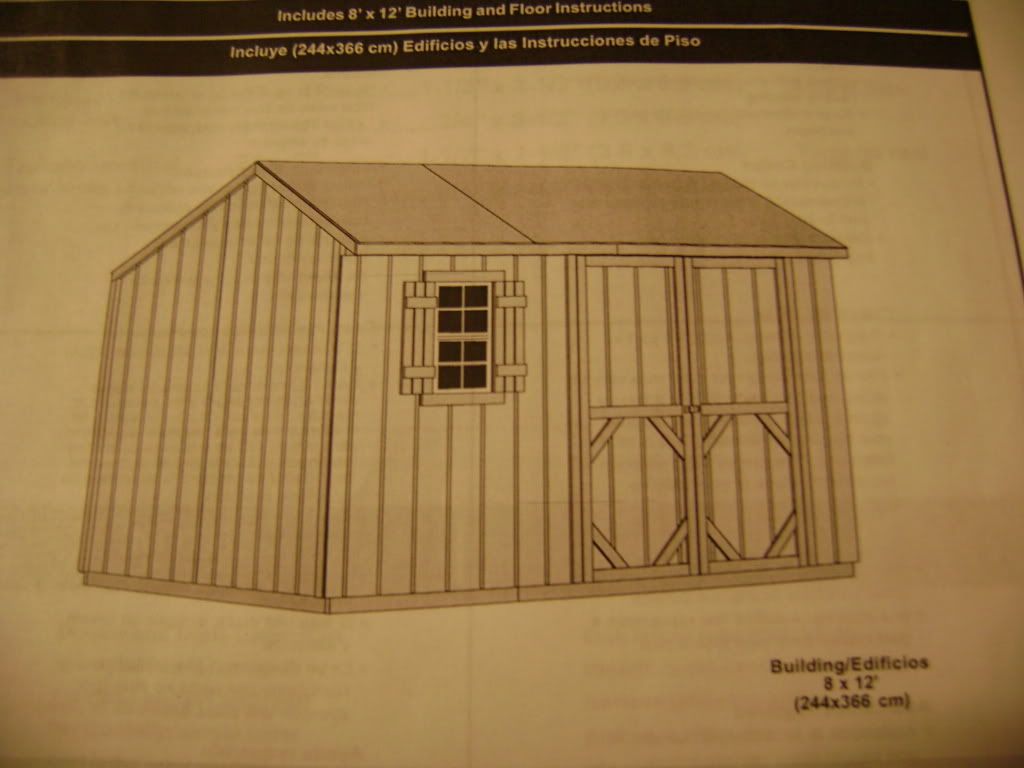
When I was a young kid many moons ago, the old farm I grew up on was slowly becoming just a piece of land. The mules my Grandpa plowed the fields with had been sold. The old milk cow that my Grandma called, Easter, was sold as well as now she had to work in a town and couldn’t take care of cows anymore. The one thing I remember that was still left on the farm was an ancient barn that had weathered many seasons and still stood like a solid oak tree was chickens.
My Grandma kept a few chickens mostly for eggs but one would occasionally find its way into the stew pot when the need arose.
When the last chicken on the farm disappeared I felt saddened as they were always some very fun critters to watch. It wasn’t until I built my house (which I am trying to turn into a homestead) in an old cotton field that my Dad and Grandpa worked that I decided to bring back pieces of the farm that I enjoyed as a child. Chickens are one of the first critters I decided to bring back with more to come as time goes by.
My wife and I read as many chicken books and magazines as we could find on the subject and we eventually settled on the idea that chickens were what we wanted. I would like to give credit to “Backyard Poultry”, “Countryside” and “Grit” magazines as they are invaluable resources for the homesteading lifestyle.
For some reason, the chicken coop never got built as they was always, “ I gotta get this prep finished before I start on another”. Well this year we killed procrastination cycle on the chicken acquisition once and for all!
After looking at portable coops, fixed building, and chicken tractors, we decided on an 8’x12’ DIY type building from our big box Hardware store. I modified it to fit on an elevated platform which it adapted to nicely. We came up with the size because it would easily handle 24 birds in the 8’x8’ chicken area. It was also decided we would start out with six pullets and eventually work our way up to 12 laying hens with a rooster for perpetual rearing of chicks in case the SHTF… but for now six it is.

I laid out the foundation in late April but the rains prevented me from opening the box the shed came in as I did not want the OSB to get warped!
My foundation consists of 9 6”x6” posts (buried 30” in the ground with concrete) supporting 3 12’,4”x6” runners that support the subfloor of the building. Overbuilt??? Probably but I am not gonna hafta worry about it being weak am I?
When I finished the foundation and subfloor I noticed on the inside there were these nice ledges and so I added DE (diatomaceous earth) to the ledges to safely kill any creepy crawlys that may decide to take up residence there.
I painted the OSB flooring with ‘porch paint’ (both sides) as it was gonna be my floor. For some reason we added a nice piece of vinyl flooring as we figured it would be easier to clean. It sure is easy to install a piece of vinyl flooring when there are NO WALLS or obstacles to cut around. It installed in about 15 minutes. Underneath the OSB I added a piece of plastic sheeting to provide a vapor barrier from the ground below.
I differed from the instructions in that I opted to use decking type screws instead of using the standard nails that came with the kit. My reasoning was this; it is much harder to pull out something that is ‘barbed’ than something smooth! I tried to maintain this detail from foundation to roof panels. I don’t wanna see something I worked so hard to build, roll across my yard on a windy day because I didn’t take some extra precautions! Do it right the first time… and I know all you men who read this blog will love to hear this validation… THE INSTRUCTIONS ARE NOT ALWAYS THE BEST WAY TO DO THINGS! They are more for just a general reference… we know usually know better than the person who wrote the manual!!! ROTFLMAO!

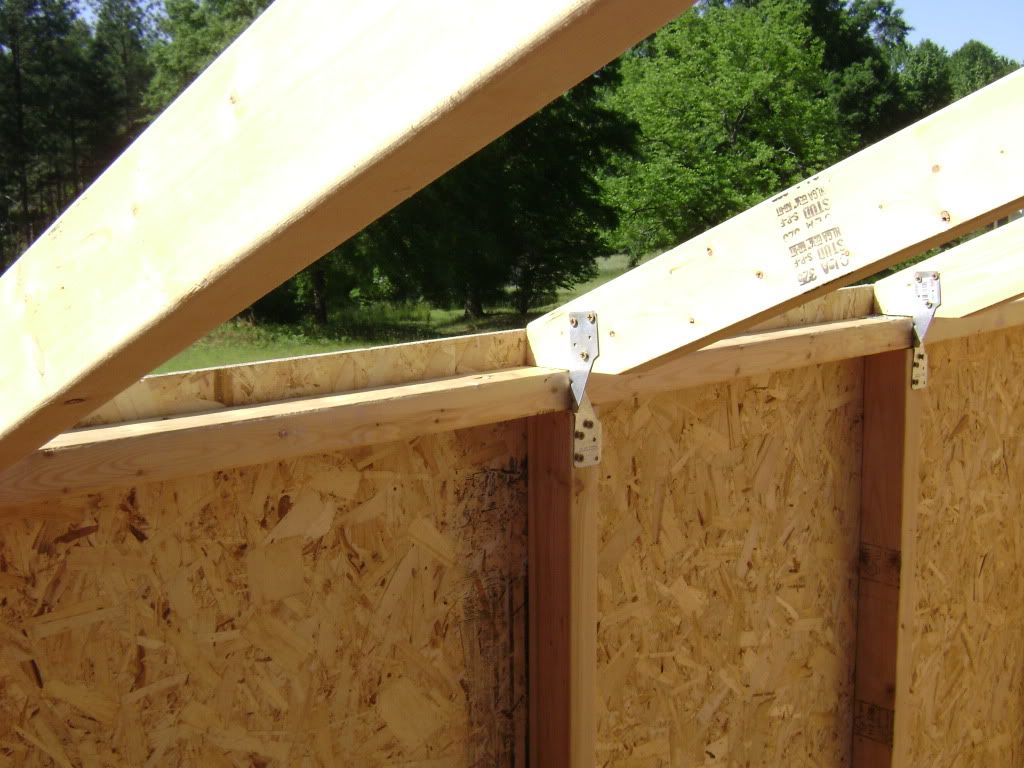
The walls studs I tied in with hurricane ties (top and bottom) and the OSB panels for the roof were screwed versus the ‘crappy nail option’.
So all in all this ‘chicken bunker’ was beefed up. I refuse to say that it will survive ANYTHING Mother Nature dishes out, but for most weather events it should still be where I put it.
I want to credit Jack Spirko of the Survival Podcast for giving me the inspiration to ‘home brew’ my own structure. Sure it was pre-cut, but the guy who is really good at making the cuts must have took the week off as I had to fix and hide his apprentice’s mistakes! When you build something on your own you learn about how things go together. The more you do, the more your skill grows… Up until building this coop, I had never built anything out of wood more complicated than some shelves! Not to mention I gained some muscle and stamina as well as lost 20 lbs of me I didn’t need. Best work out I ever had!
So now for a tour of the coop/bunker...
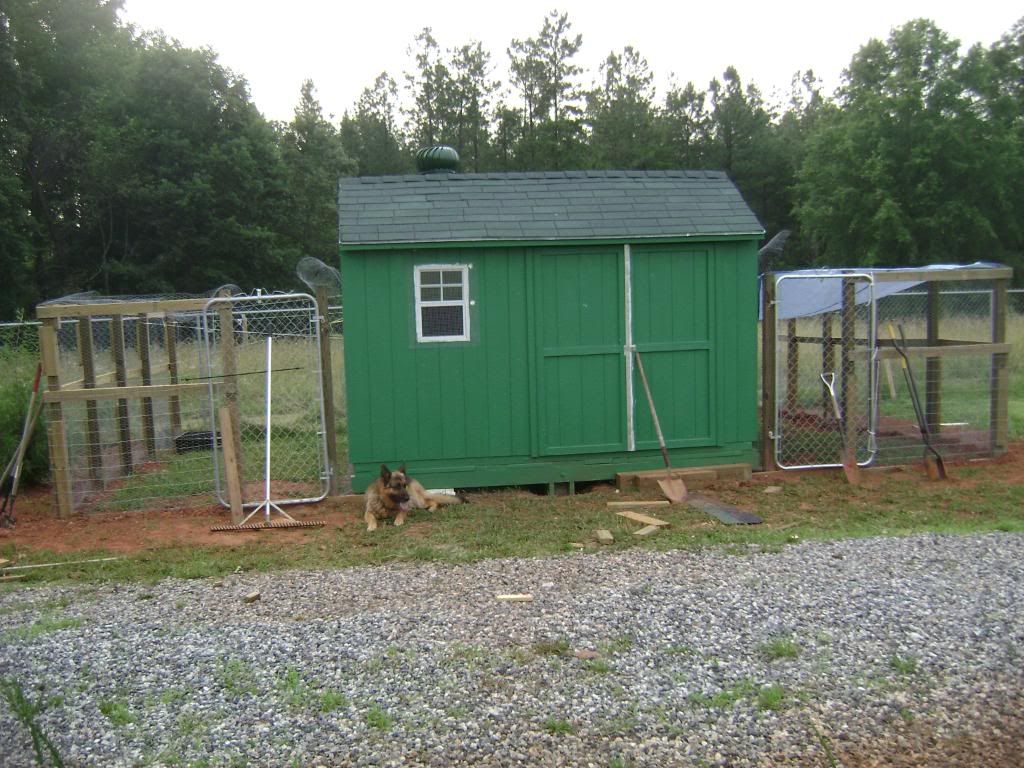
We liked the idea of the double door. When you open the first door on the right you enter the nesting box, food storage observation area. The left side door stays latched unless you need to enter the chicken area to shovel out litter/manure. There is a screen door where you can enter the chicken area from storage area. It swings toward the outside door so if some chicken decides to ‘bail out’ the screen door will stop her/him.

In the storage area (gonna call it a foyer from now on) the nesting boxes protrude inward. You can easily flip a latch and check the top 3 or bottom 3 nests for eggs WITHOUT entering the chicken area. We did this to be easy for folks that will take care of our flock when we go on vacation, and it is a really cool feature in my opinion.
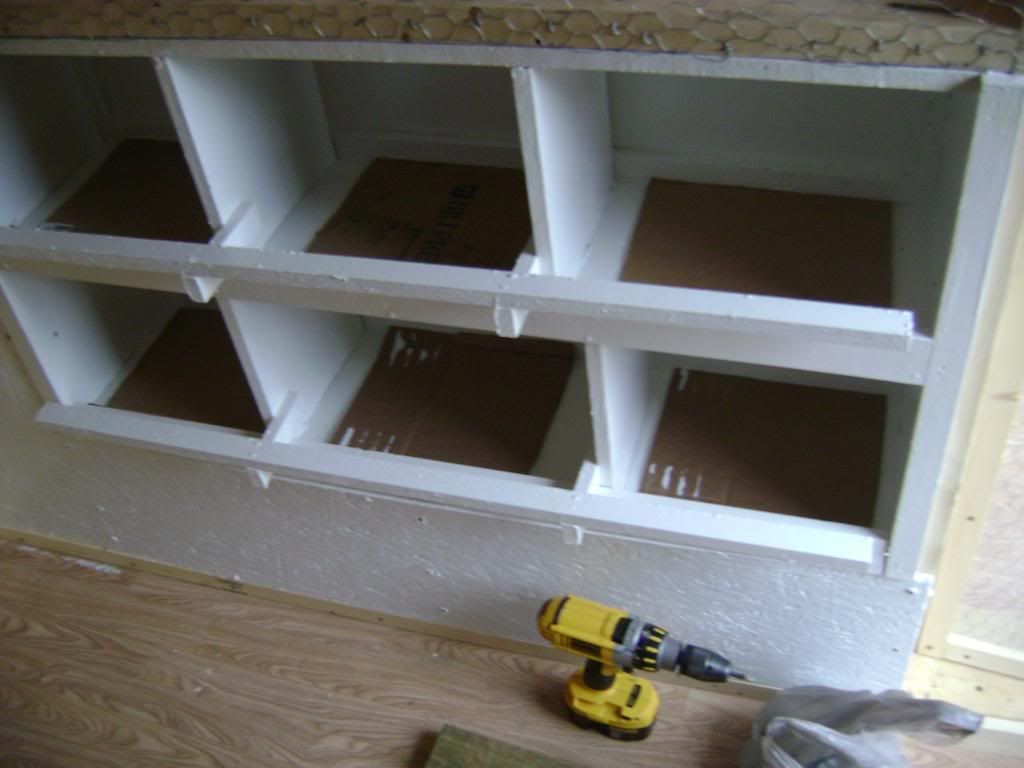
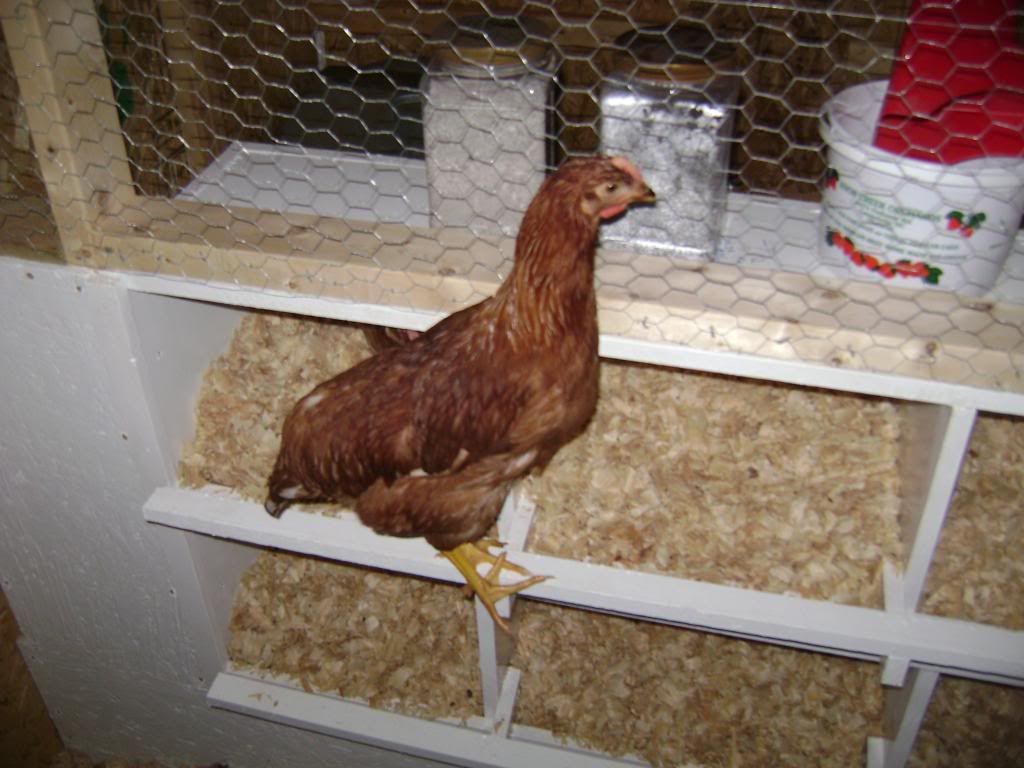
The design came from searching the web for nesting boxes, commercial options and many other blogs on the web! It turned out pretty well and I even had the nice guy at the big box hardware store cut them for me… (How else was I supposed to get it home in my compact car???). Then it was a matter of screwing them together and painting them. For a cost of $30 I easily beat the $100+ price of a poultry supply company made one.



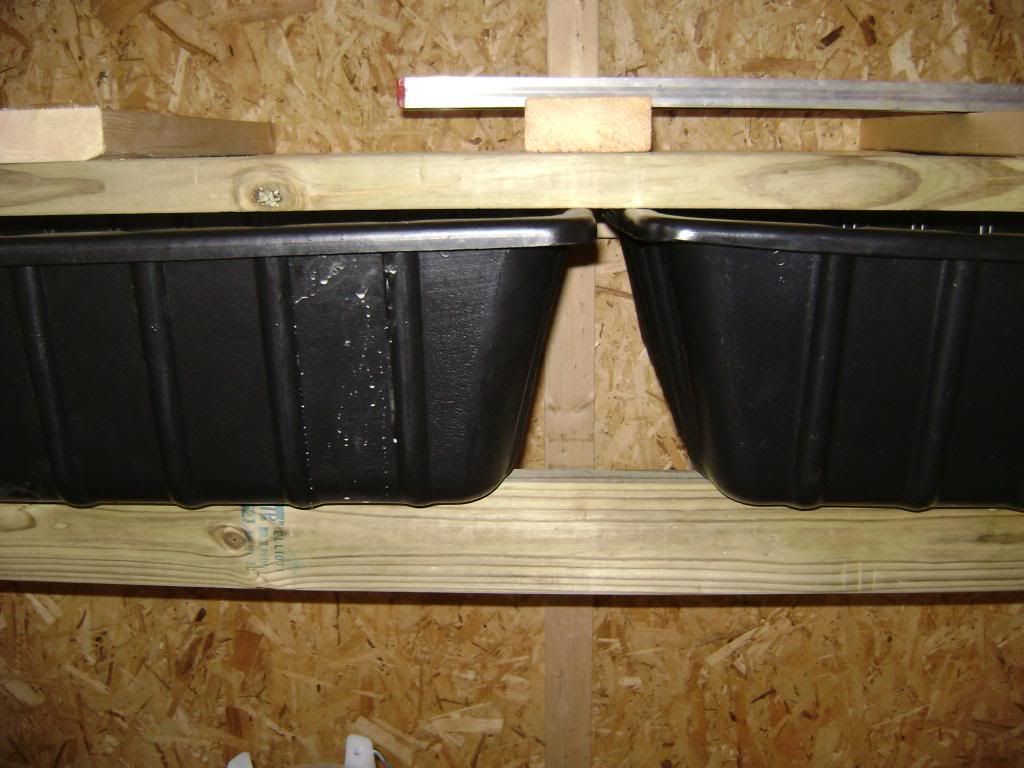
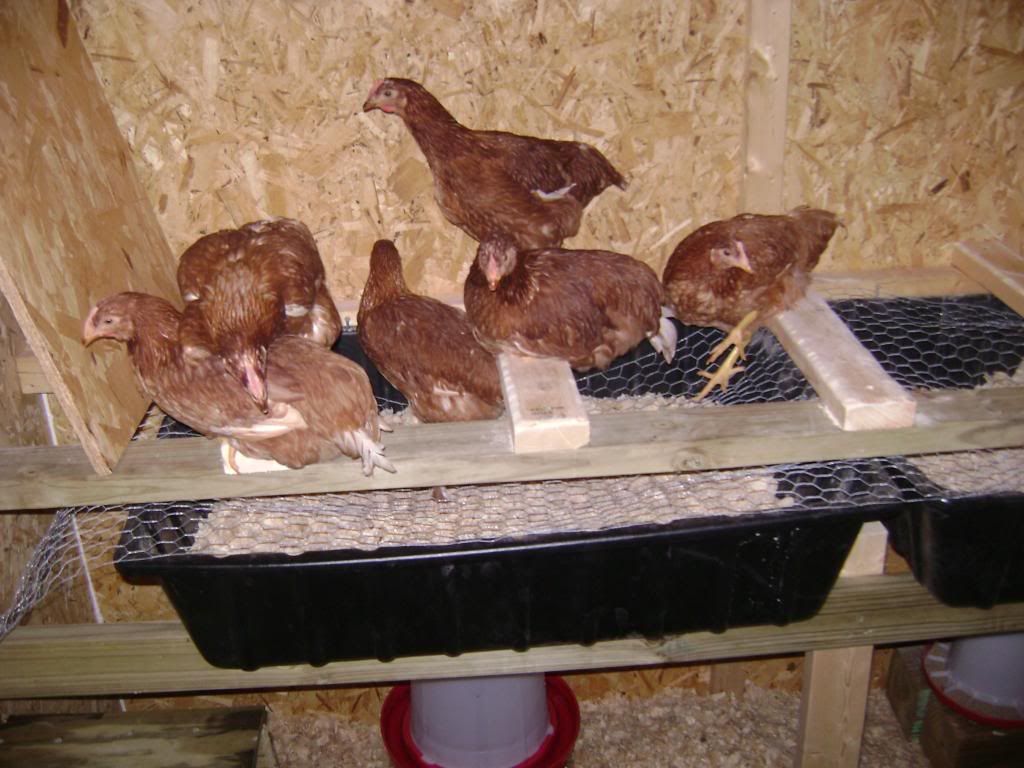
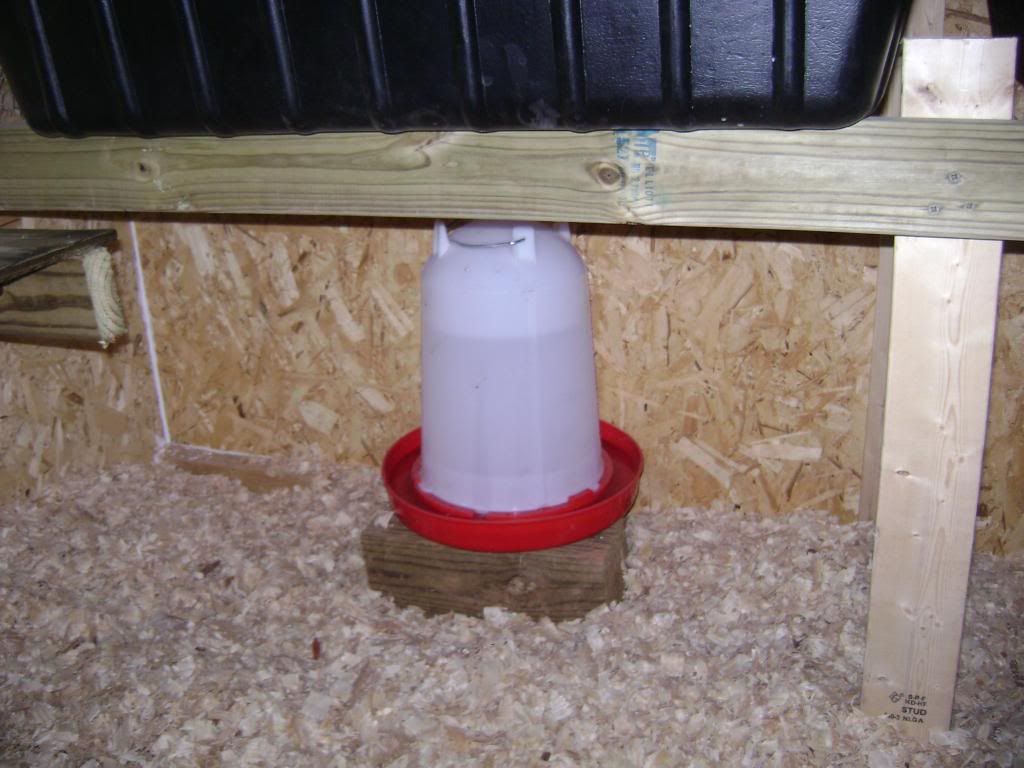
My wife stumbled across some folks that had made litter boxes for their perches. The idea is that when the birds perch they crap and it falls below. The litter box approach is an idea to solve two problems. One is to make the litter below stay cleaner longer and two, give more floor space for the birds. I used this sheltered space to place my inside waterer and feeder.
I used some multipurpose tubs 2’x3’x8” deep (available at Tractor Supply, Home Depot and Lowe’s… the latter two in the concrete area) that are light, strong and big! One the back wall I drilled two holes per tub into the stud on the back wall. I then put in nails (to fit loosely in the holes) to hold them against the wall. This step saved me building a large support system to make the tubs slide in and out like drawers. They still do but you simply remove the two nails and slid it between the 2 2x4’s in front and take it to the compost heap! EASY! I also added a piece of chicken wire between the roosts and tubs, so the chickens wouldn’t use them for nesting. I also added two slanted pieces of particle board (what I had on hand) to prevent the chickens from roosting anywhere but over the litter boxes. One of the roosts is strategically placed over where the two tubs join.
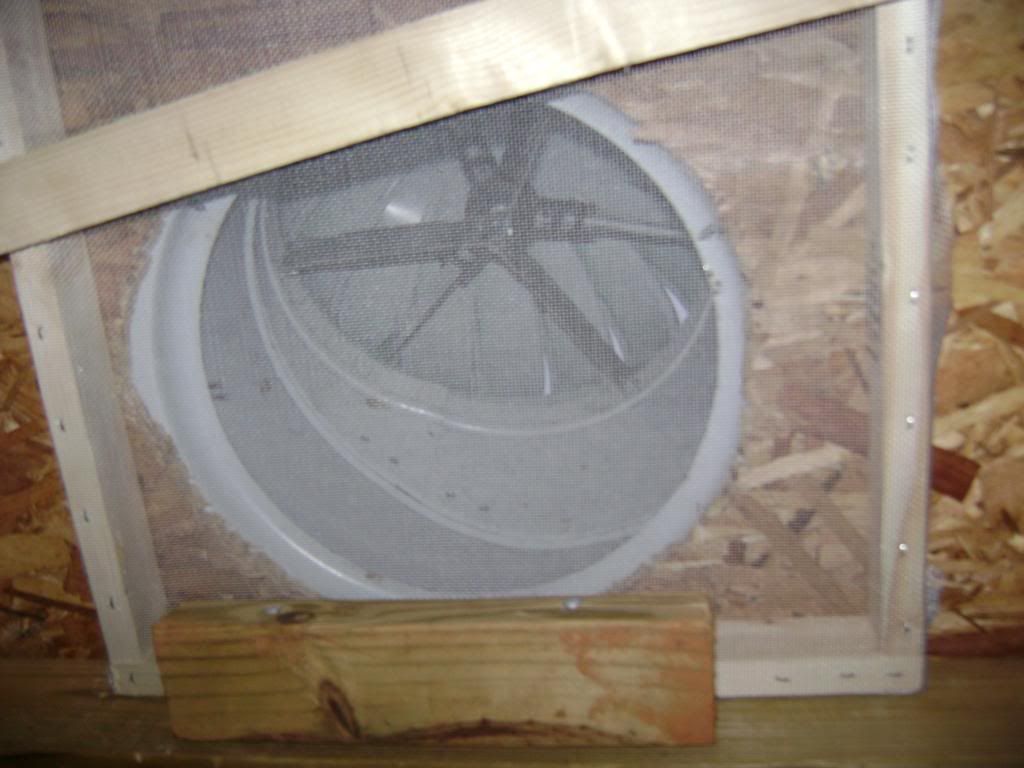
I wanted some good ventilation so I added one of those wind power ventilation turbines. I have some vents I need to add and my goal is to have the fresh air drawn in from the outside and pulled through the foyer/storage area, through the chicken area and out the turbine. Think of a hospital room for a TB patient…
I added a screen to the hole under the turbine to keep out flies. Had to wedge it with a furring strip because those long screws should go through your shingles!!!!Will have to reduce this airflow in the winter so as to not be to drafty!

The building came with a nice window with a decent screen… for flies. I added a piece of hardware cloth to ‘beef up’ the window from any predators that come calling at night! I will be adding some trim and make it look nicer as I finish the details later on. Will be adding an awning as well so water will not blow in the window.
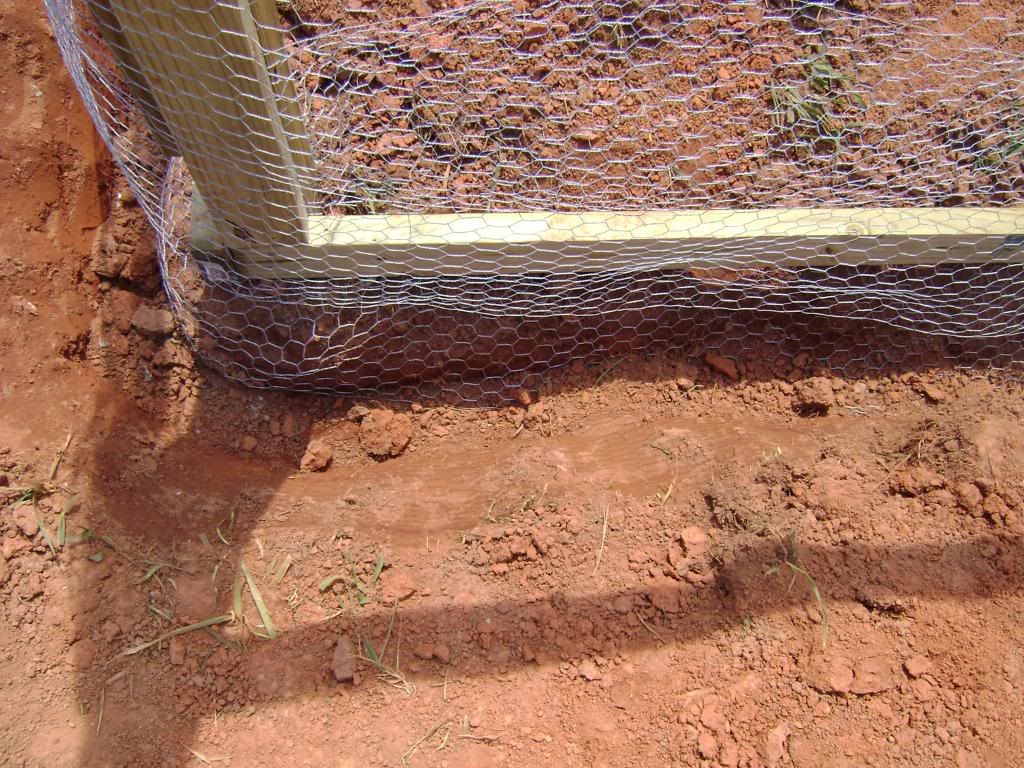
The fence is buried one foot under the ground and turns outward to prevent any diggers from burrowing under the fence. I think Shep can take care of THOSE problems though. I added some garden fencing to beef up the lower four foot of the fence from strong animals. I still hafta cover the top with poultry netting but for now it is operational. I have the left side of the run covered with a large tarp as well as the center until I can build a sheltered area in the fall.
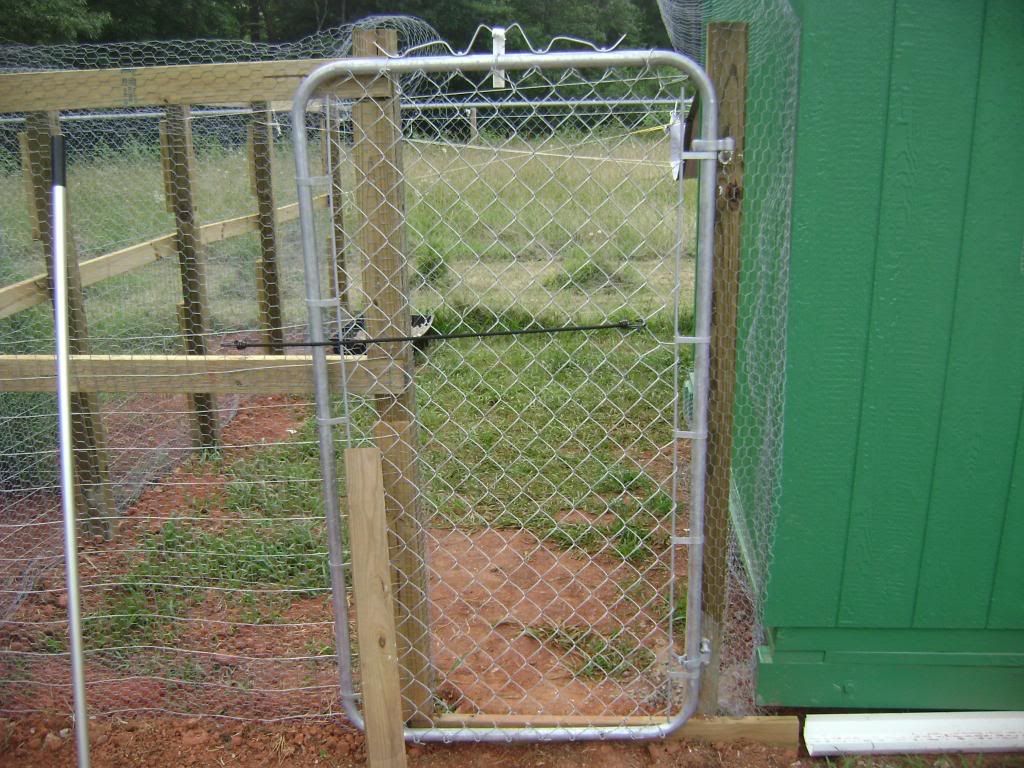
For the gates I was worried about anything I could build from wood might warp, so I went with a 6’x42” readymade chain link gate. I got some bolts to attach it to the wood posts and instant gate. I added one for the left side as well. When eventually I split the run I will have a separate access. This worked like a charm and saved me a bunch of ‘fabrication hours’ doing it with wood!
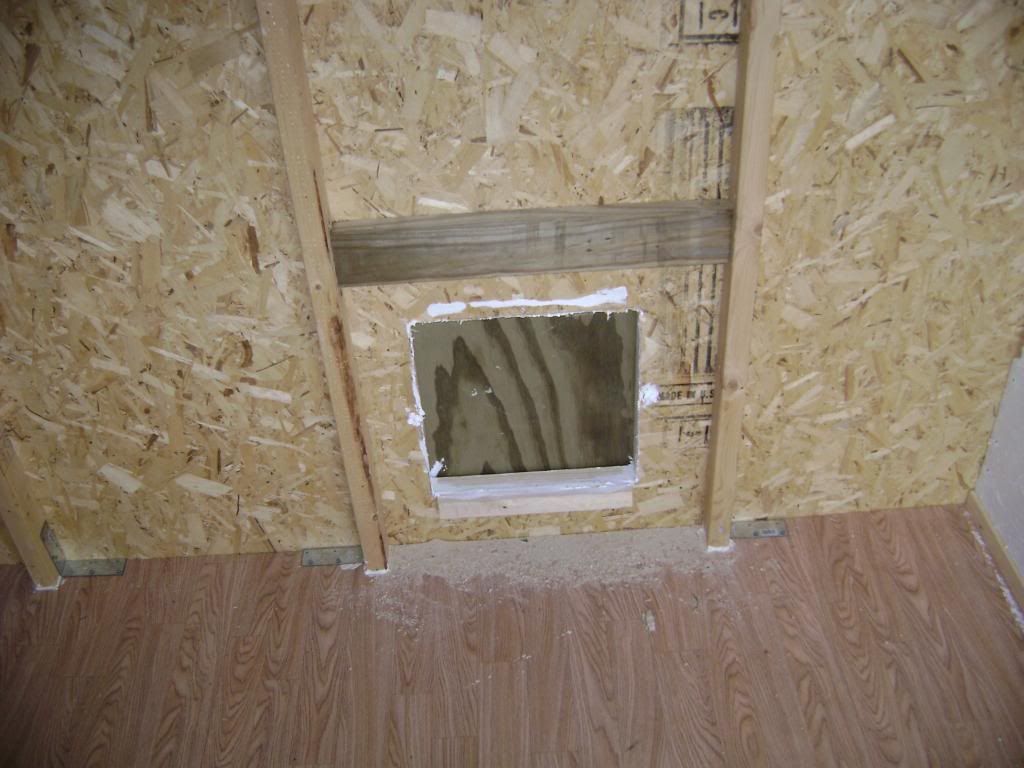
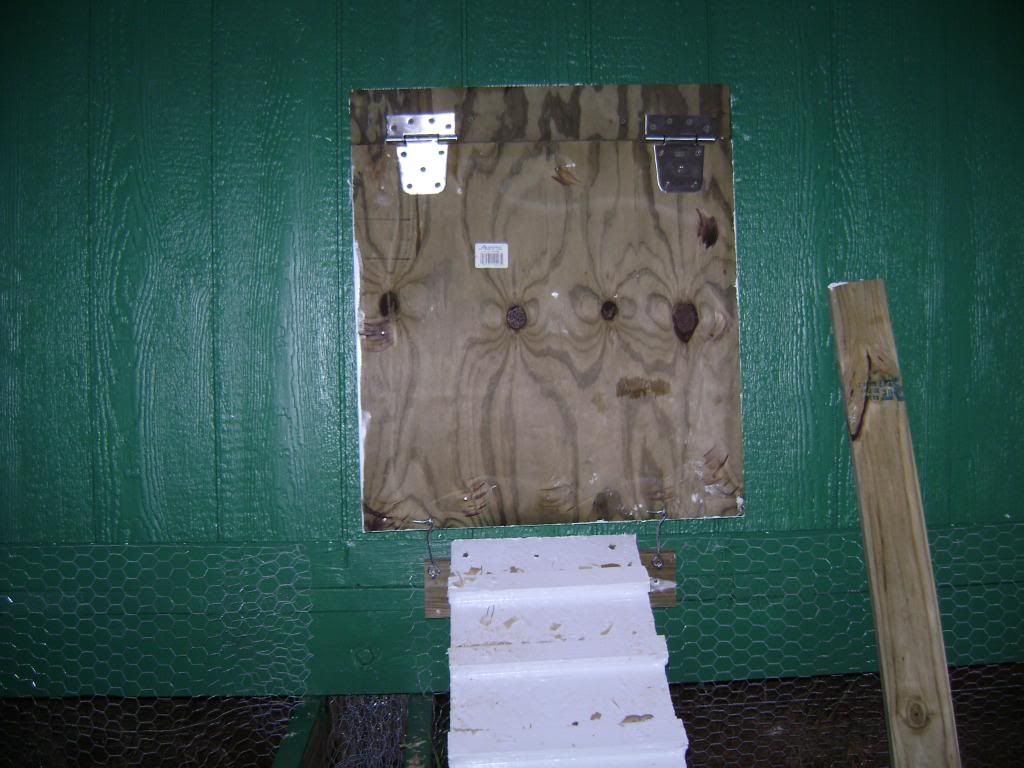
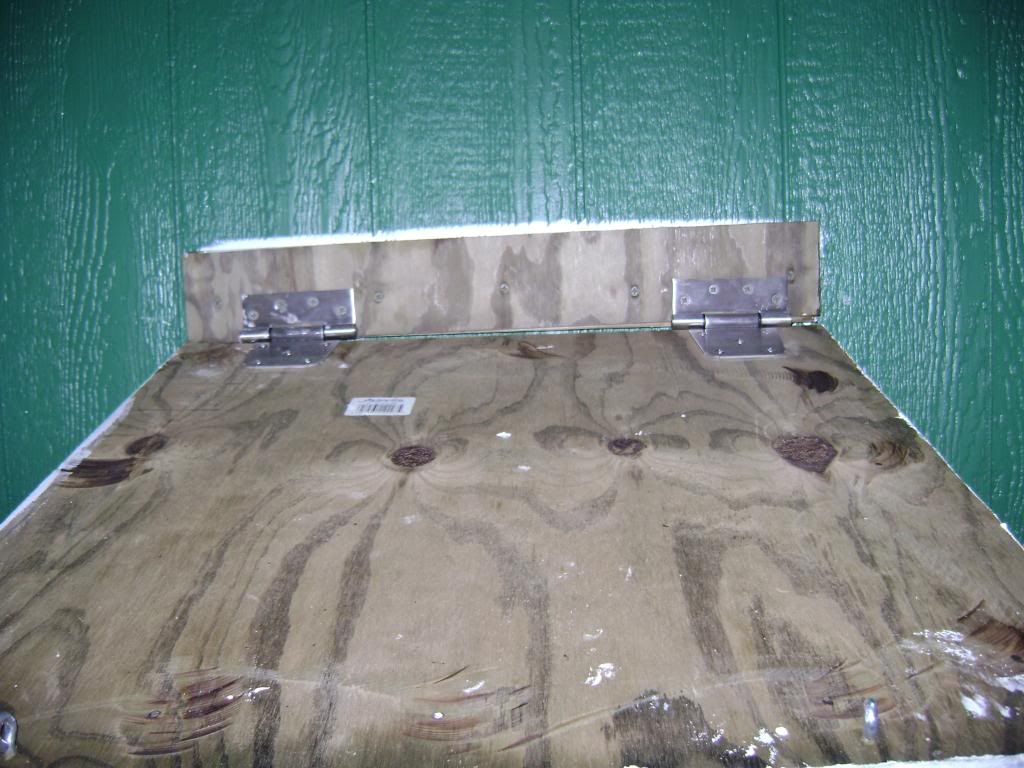
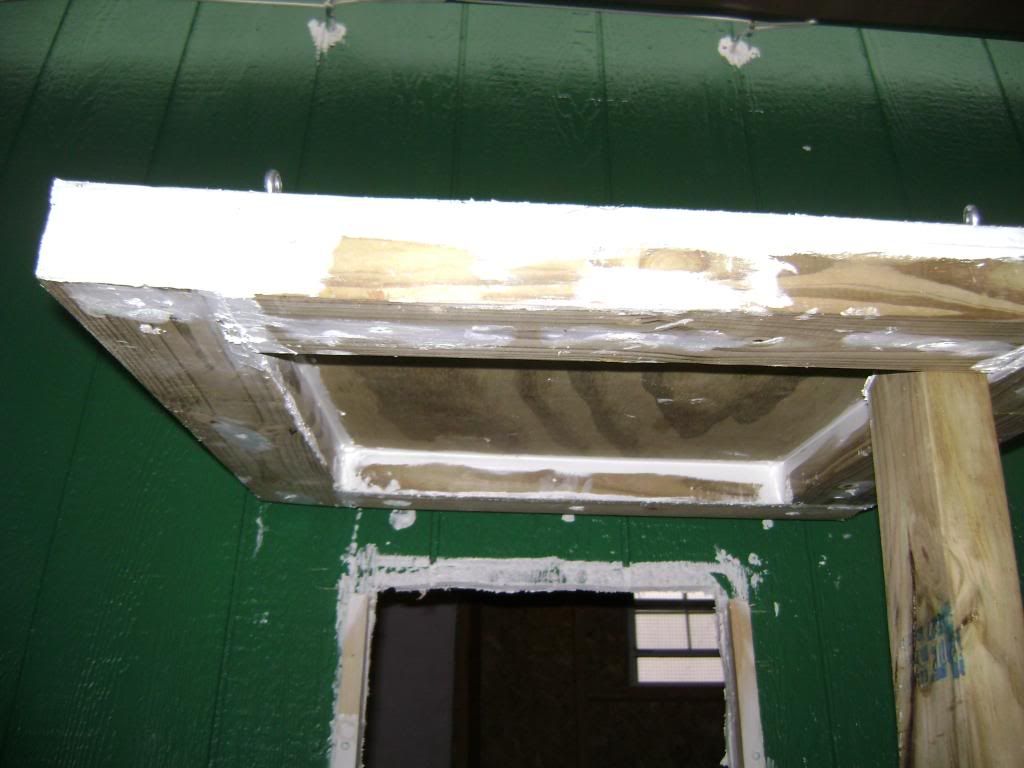
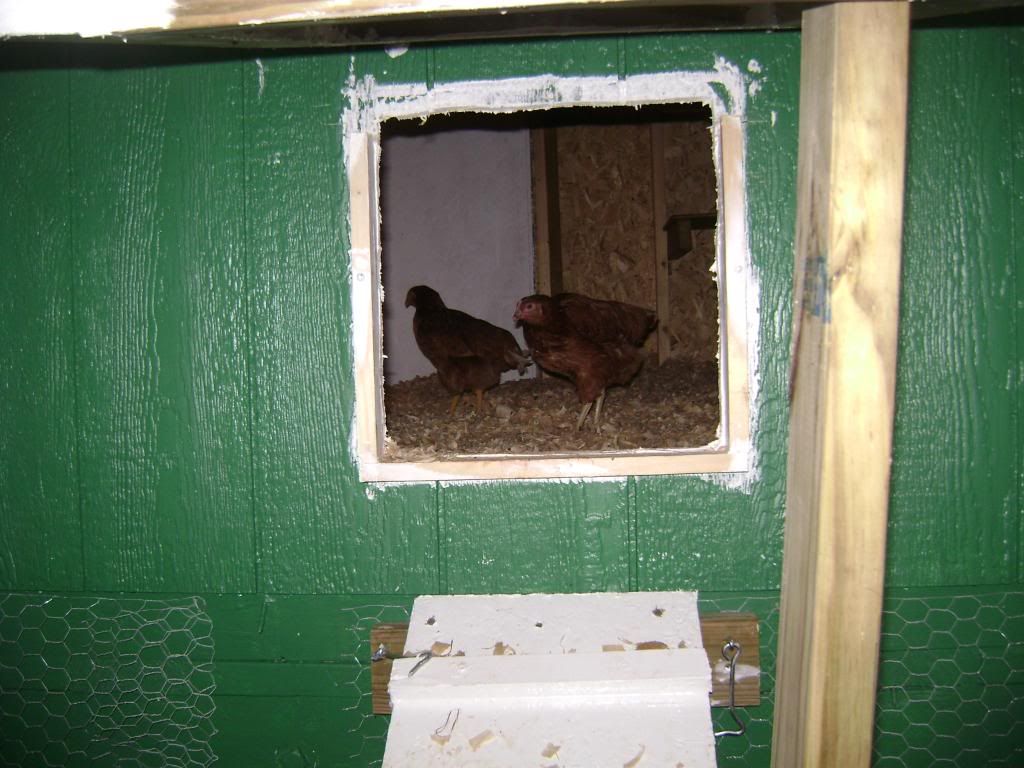
For the chicken door I used a 2’x2’ piece of pre-cut plywood, some stainless steel hinges, treated 2”x4”, furring strips and 2 hook eyes. The idea for the chicken door was based on my version of an airlock. The hole was cut and a furring strip was placed around the hole. The 2’x2’ plywood was nailed to 2”x4” flat side down. The idea is the 2x4’s seal up with furring strips and prevent air and critters from gaining access when closed. It worked well except I had to remove the top furring strip to make it work correctly!
I will be painting this as well as adding some shingles to shed any water and to protect the wood.
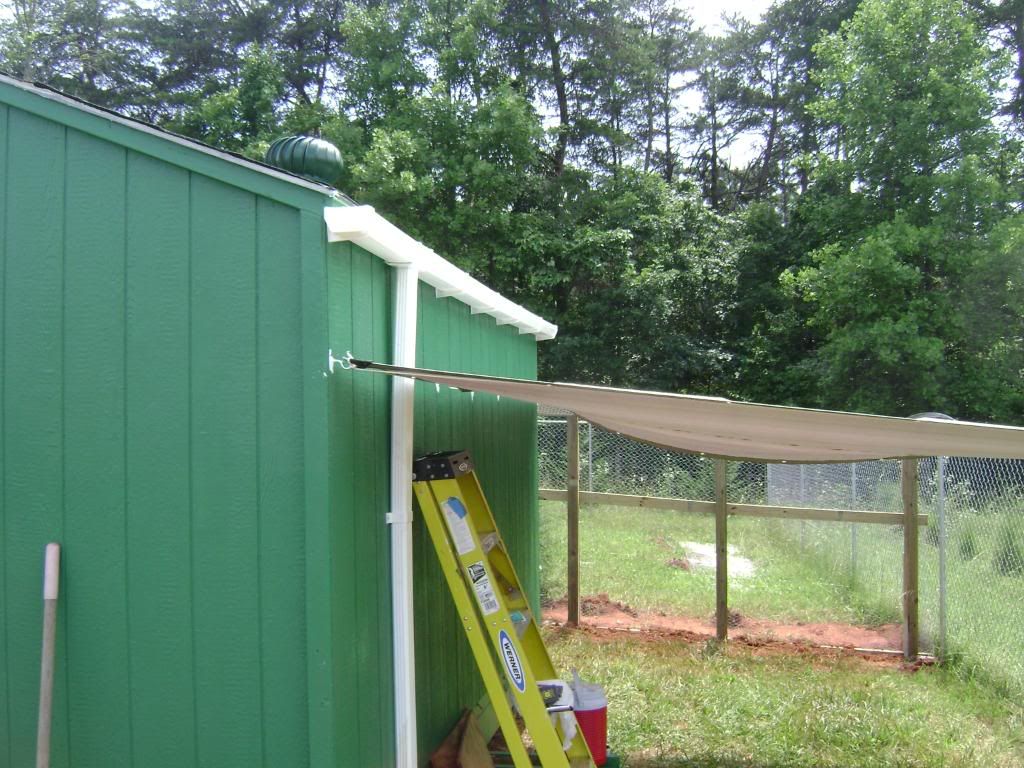
I added a gutter on the rear and will be adding one on the front with a rain barrel to water my nearby orchard in the dry season. Gonna be VERY COOL to not hafta drag out 200’ of hose to water my apple trees.
I do plan on adding some power later on in the fall so my egg production will not fall off in the winter months. I am also sure that I will be adding options or features that make the operation run smoother.
I would like to double my layers to 12 as it would be nice to have the extra protein. In a SHTF scenario if I have enough surplus eggs, it will be a good source of food for my ‘Sheps’ as well!


So there is a tour of the ‘bunker’ and I hope it has given some folks ideas of how to build your own. I do plan on building a few portable coops to place over my raised beds in the future, but for now I am done building any more ‘chicken housing’ for the next few months. I will let you know when I start getting eggs!
Thanks for reading and thanks for still being here!
Later,
ZA




